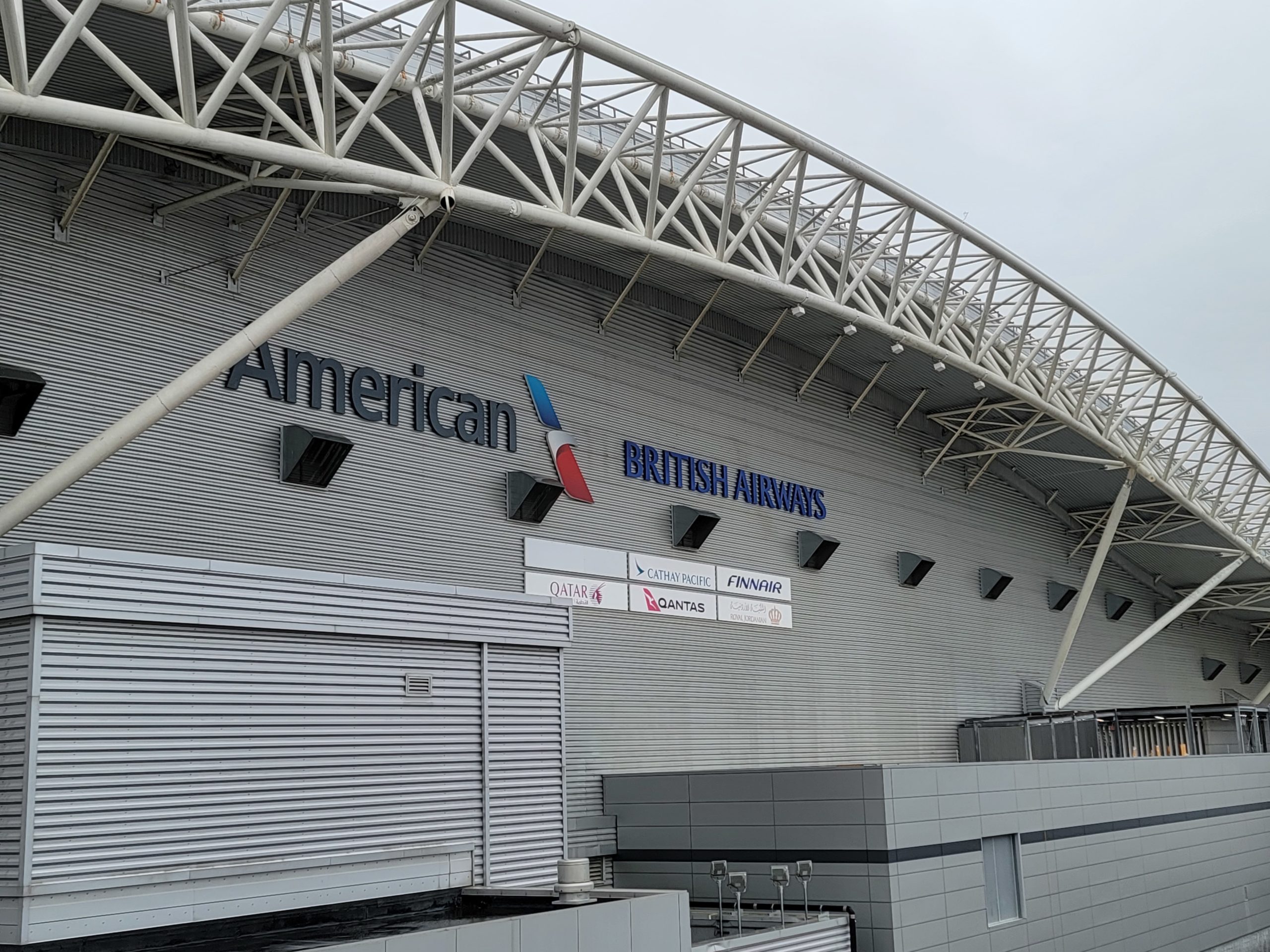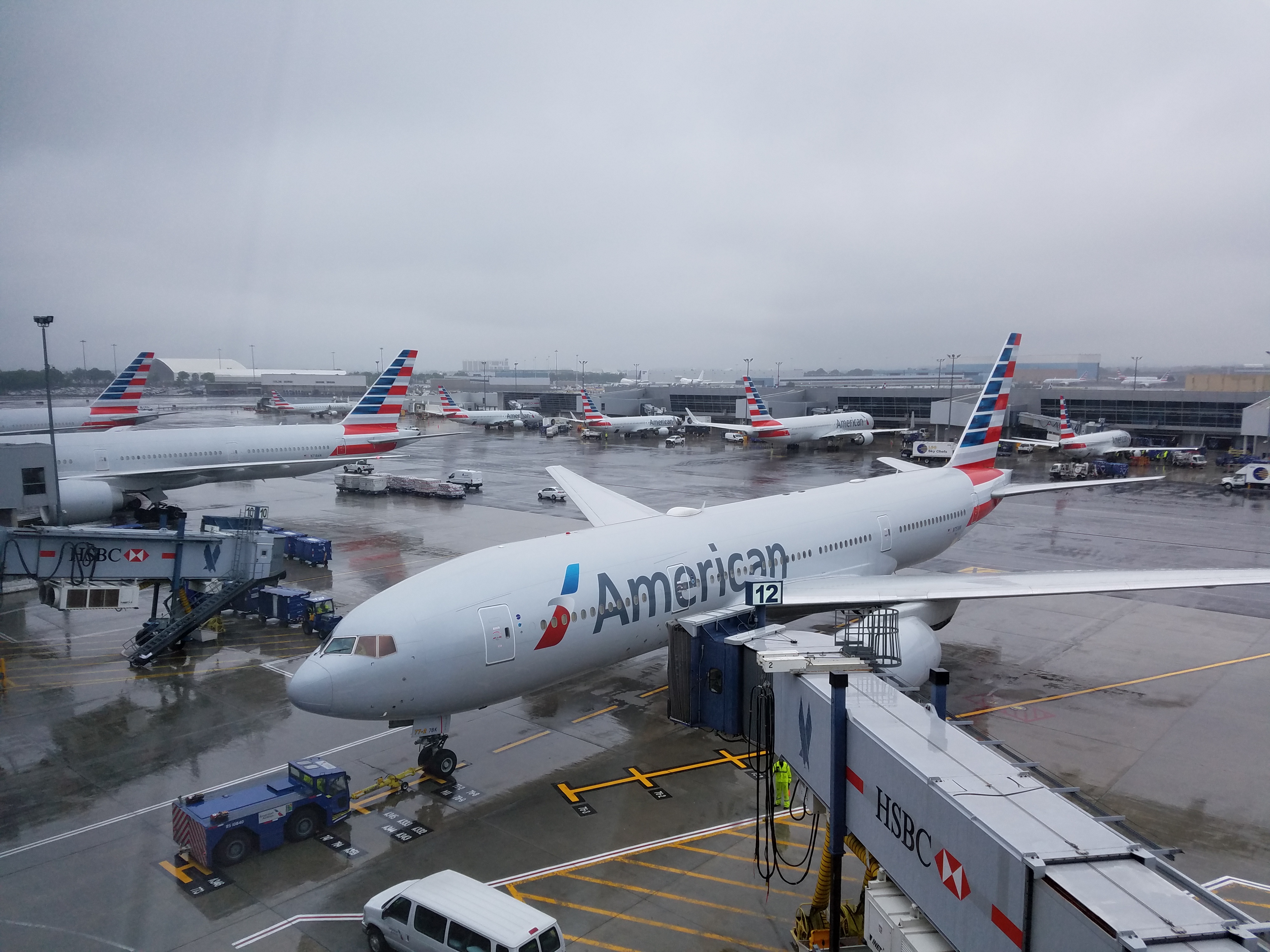American is being forced to dismantle its JetBlue partnership which has been the crux of its New York strategy.
- They’ve long lost money on flying in the New York market, in their telling too small to compete for corporate and loyal business with Delta and United.
- They’ve tried timing schedules to meet the needs of passengers heading to New York rather than New Yorkers, and they’ve tried running a ’boutique operation’ before hitting on the Northeast Alliance that lost in court against the Biden administration.

During their second quarter earnings call, Chief Commercial Officer Vasu Raja explained why they believe they’ll still succeed in New York, without their alliance with JetBlue.
He offered that their “commitment to the customer in the Northeast” and specifically in New York “hasn’t changed.” However he believes two conditions have changed that will allow them to succeed in New York without JetBlue.
- Pre-pandemic, “the majority of demand was short haul day trip business markets,” and American’s “slot portfolio [was] better matched to transcon and transatlantic” flying. But managed business travel to those short haul markets for day trips is less important now.
- Their “expense base changed with co-locating partners and fleet changes,” so they have lower costs in New York (they get terminal rent from more partners).
Claiming that their costs are materially lower seems a stretch. Perhaps customers want something else than the “broader network experience” that was provided by their partnership with JetBlue.
Later Vasu Raja offered that JetBlue’s leases of slots from American are still being sorted, but suggested that what’s being worked through is “how they transfer back the slots to American.” The expectation is that American re-grows its own flying in New York. That may explain his comments about New York that “another chapter might open.”
The original thesis of the Northeast Alliance was that they’d have access to JetBlue’s customers (and vice versa) and that they’d sell corporate contracts together, competing for traditional managed business travel in a way they hadn’t been able to. However,
- They really haven’t sold corporate customers together, and managed travel has continued languish at least 20% below pre-pandemic levels even as other travel has exceeded it.
- They’ve been de-emphasizing travel agents and managed booking, anyway.
- The bulk of their New York flying is from local traffic, not passengers connecting to and from JetBlue.
We don’t yet know what the future of American Airlines looks like in New York, but one thing American has seen since the launch of its JetBlue alliance made them relevant in the city, is that aggressively serving the market generates AAdvantage signups, credit card acquisition, and helps capture a share of card spend in one of the most important spend markets.
They note this as current strengths, but offering flights to places and at times people want is key to relevance and they’ll have a smaller network to sell and less relevance.
American says that the loss of the Northeast Alliance won’t have a “material” impact on their results, but material is a very specific term. Most people will hear it as meaning there won’t be a meaningful effect. Materiality is a high threshold for a business as large as American Airlines Group.
And they don’t break out results of the AAdvantage program, and their co-brand partnerships, by hub. Saying there won’t be a material effect from losing the partnership doesn’t mean there won’t be an effect on co-brand revenue.

American’s New York JFK terminal 8 is getting new concessions and a $125 million refresh. There’s already new shared lounges with British Airways and a new premium check-in. They certainly have valuable assets, can’t walk away, so it’ll be interesting what strategy they come up with next to stay relevant to customers and continue driving card signups and spend.


I’ve said for years that AA should look at JFK/LGA and LAX as “Destination Hubs” . They are right on the business travel statement, our families business travel (my wife and I both travel , or should I saw travelled a lot) is down 70% from 2019, but we do more conference and leisure travel for sure. Set up NYC and LAX to connect to top US/NA business destinations and key European, Caribbean, Central/South American and Asia/Pacific cities (coordinating with OneWorld partners too). That will make both profitable. Being the “largest” doesn’t always make you the most money. Let’s fact it AA owns the Caribbean/South America/Central America and the Southern/Central and Southwestern US (aka the US cities that are growing). They have hubs in 8 of the 10 largest US cities and come on British Airway, Qatar, JAL as partner is a BIG win.
The more things change, the more they stay the same. American will continue to fine tune JFK and LGA and use the assets they have there. Routes will be dropped, replaced by others. Rinse and repeat. They can’t abandon NY and they can’t grow it exponentially. They can just lower costs and focus on O&D which makes sense. They also need to do some differentiation and spin a compelling reason not to fly DL or UA out of NYC.
I’m guessing that American’s management team isn’t quite as stupid as many of its critics apparently believe,.
Given that AA lost money flying alot of the routes it handed over to B6, it is doubtful that they will re-add as much as some people expect.
add in, AA has much less capacity to add because of its much lower aircraft delivery schedule than DL or UA.
Credit card revenues and lower terminal costs didn’t make the difference between low revenues and what other airlines got in the past. Given that their systemwide loyalty and credit card revenues are public, it isn’t supported to say that their lower costs will cover the level of losses they experienced before.
Nobody thinks AA management is stupid but we do have decades of history in NYC and find it hard to believe they can come up w/ anything they haven’t done before.
and on the broader subject of AA’s earnings, they posted much stronger results not only compared to their own history but also relative to DL and UA that they have posted in years.
In fact, AA, despite posting slightly less total revenue than UA, posted a higher net profit and also higher margins.
UA tried to “adjust” out the $800 million retro payment it owes its pilots as part of its new pilot agreement while AA simply showed their pilot retro as a special item – but didn’t try to “adjust out” the impact of that agreement.
DL followed the same methodology as AA when it took its hit in the first quarter from pilot retro.
Notably, both AA and UA do not even have a tentative agreement w/ their flight attendants so their cost base is not on an apples to apples basis with DL.
Also, AA did not grow as much as DL or UA but DL grew its international capacity at a faster rate and also got better revenue relative metrics on its international system including RASM than UA. UA is the largest US carrier by international revenue but considerably smaller than AA or DL in the domestic market (AA’s domestic revenue was slightly higher). DL still posted the highest total revenue and highest profits.
AA says the end of the NEA won’t be material in part because its southern US system is red hot which considerably overcomes the revenue loss from the NEA.
For years on this blog, I have argued that American simply needed to compete better, with better product (in-air and on the ground), better planes, more relevant scheduling, etc, and that they didn’t need to rely on JetBlue or other marketing/partnership gimmicks. It seems that they finally agree.
The current AA management should be burning effigies of Doug Parker and his absolutely boneheaded deal to basically give away those LGA slots when he ran US Air. In the list of bad airline management decisions, that one has to be near the top.
I’d like to see AA grow their Trans-Atlantic options on AA metal from JFK.
eds183,
you are absolutely correct that the DL-US slot deal was nothing short of a gift that turned Delta into the largest airline in NYC.
but let’s keep in mind that it was orchestrated by Scott Kirby who couldn’t figure out how to use 1/4 of the slots at LGA. He was the network guru and only made the recommendation to Parker.
Turn about was when Kirby went to UA which had underutilized its slots at EWR so slot controls were removed and the decision by UA (before Kirby) to leave JFK. Now, UA is forced to operate less flights than it wants, there are more competitors at EWR, EWR’s operational performance is one of the worst in the US, and they still can’t get back into JFK.
AA has decisions to make but I am as certain as they day is long that they will not give up enough slots at JFK to allow UA to build the necessary schedule to compete against AA B6 and DL. LGA is another story and there were differing takes the outcome of slots from Isom and Vasu on the earnings call.
Tim Dunn claims “UA tried to “adjust” out the $800 million retro payment it owes its pilots as part of its new pilot agreement while AA simply showed their pilot retro as a special item – but didn’t try to “adjust out” the impact of that agreement. DL followed the same methodology as AA when it took its hit in the first quarter from pilot retro.”
Pretty sure DL adjusted out the pilot retro last quarter similar to what UA did this quarter.
DL 2023 Q1
Pre-tax margin (4.0) %
ADJUSTED for items such as…
ONE-TIME PILOT AGREEMENT EXPENSES 864M
Pre-tax margin, ADJUSTED 1.8 %
UA 2023 Q2
Pre-tax margin 9.8%
ADJUSTED for items such as…
LABOR CONTRACT RATIFICATION BONUSES 813M
Pre-tax margin, ADJUSTED 15.3%
Sometimes I wonder where Tim gets his numbers from since he rarely uses them on here. Then I remember him telling an airline CPA on SA that they didn’t know how to read financials.
AA is bloated and rakes in money from hubs with limited competition. NYC is full of lower cost competitors that drive down fare pricing while having high operational costs
I would fly more often if they didn’t have connecting flights everywhere. AA hardly flies to the Caribbean. They don’t offer a direct flight to Orlando, which is huge for New Yorkers since many New Yorkers have friends/family who relocated to Orlando over the last decade.
They don’t fly direct to Puerto Rico, Colombia, nor the Dominican Republic. This represents millions of Tri-State residents.
If they want to compete in NYC, they need to start competing with the Deltas, JetBlue and Uniteds of the world.
For context, Judge Leo Sorokin (who presided over the case) wasn’t appointed by Biden. He was nominated by Obama. I’m not sure why this article needed to bring this up. It’s distracting and takes away from the main point.
@Joe – the reference to the Biden administration was that the Biden DOJ was pursuing (and won) the anti-trust case